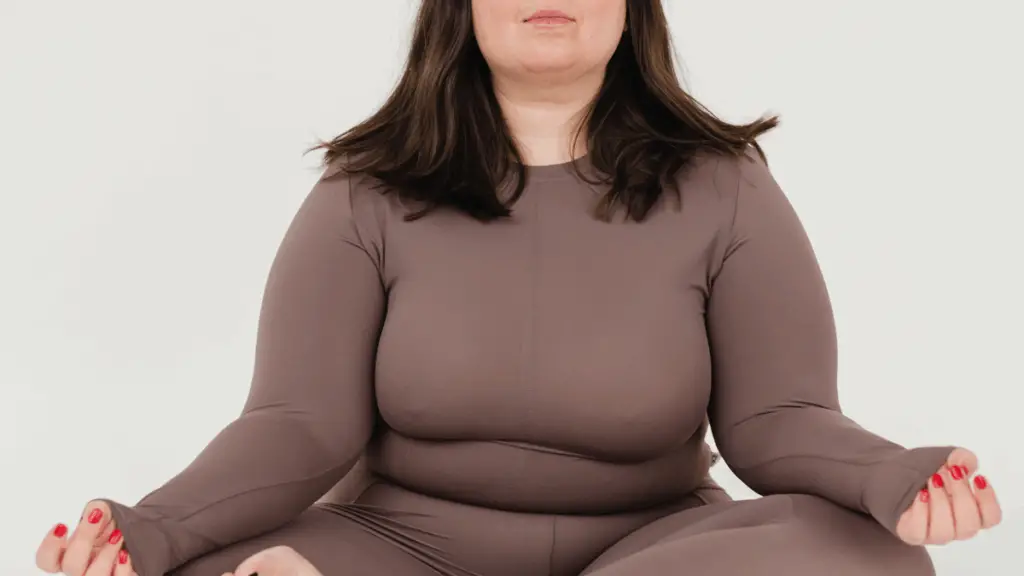Wellness has grow to be a cultural anthem, echoing throughout TikTok feeds, emblem campaigns, and spa-inspired Sunday resets; then again, it forgets about frame variety.
For lots of plus dimension and curvy ladies—particularly Black and Brown ladies—the shiny advertising of self-care hardly ever displays true frame variety. As an alternative, it incessantly looks like code for “skinny, white, rich.”
The mainstream wellness trade, valued at over $5.6 trillion globally, hardly ever speaks to ladies whose our bodies don’t are compatible its slender perfect. A scroll thru Instagram or Pinterest beneath #wellness finds the similar aesthetic time and again: narrow our bodies in neutral-toned athleisure, sipping inexperienced juice, or lounging in cryotherapy spas. Those photographs are all over the place, however the illustration of wellness for plus dimension ladies isn’t. And for the ones folks who straddle the intersections of race, dimension, and sophistication, the message is even clearer—that area being created for you isn’t at the most sensible in their record.
From the early days of the well-known SoulCycle to the present Erewhon grocery obsession on TikTok, to jade-rolling to microdosing, nowadays’s model of wellness can incessantly really feel like a classy efficiency reasonably than a holistic adventure. The prices and exclusiveness of get right of entry to to puts providing those services and products also are commonplace turn-offs for the typical lady. The upward push of “that woman” tradition—curated on TikTok and YouTube—has strengthened this slender lens of self-care. You recognize the vibe: a 5 a.m. wakeup, celery juice, scorching yoga, journaling in a $40 pocket book, and now not a unmarried roll, scar, or stretch mark in sight.
Then, in fact, they make cash from emblem offers which have been simply obtainable to them as a result of their appearances, and thus don’t normally have the difficult activity routines that ladies have to include wellness and self-care into. Why can’t we see extra plus dimension and curvy influencers propped up in those wellness campaigns? In most cases, since the approach we glance isn’t the aspiration, however normally the cautionary story. Our our bodies are incessantly portrayed as what wellness is supposed to repair, reasonably than have fun. When frame variety is not noted of the dialog, it sends a transparent message: wellness is reserved for individuals who already are compatible the trade’s aesthetic perfect.
However what occurs when your frame doesn’t agree to that aesthetic? What in case your frame is spherical, comfortable, or visibly other? What should you are living in a frame that the wellness trade nonetheless sees as a “earlier than picture”? For this reason frame variety throughout the wellness trade isn’t just necessary, but additionally the loss of it may be destructive to many ladies ultimately.
Popular culture has began to have interaction with those questions, however refuses to maintain and elevate at the dialog. Displays like Harlem and And Simply Like That… have dipped a toe in, that includes characters like Angie who unapologetically personal their our bodies and their taste. Voices like Lizzo, Tabitha Brown, and Ashley Nell Tipton also are serving to shift the narrative, whilst repeatedly receiving pushback from society, more often than not. However those moments stay exceptions.
Plus Dimension Ladies Deserve Actual Representations of Frame Variety
Extra incessantly than now not, fats and curvy ladies are both not noted of the dialog or targeted most effective when their our bodies are being “remodeled” or used for convenience. Take into accout when Rise up Wilson and Adele have been praised basically for dropping pounds reasonably than their accomplishments? We’d celebrated them for goodbye for being representatives of frame variety in Hollywood and at the display, so why did the general public alternate its tone once they misplaced weight? Or how in regards to the customers on social media who will incessantly describe plus dimension ladies as “courageous” merely for present optimistically within the footage and movies they submit? Precisely.

The bittersweet fact about those problems is that now actual areas for us do exist as a result of the exclusivity, and they’re cultivated by means of ladies who have been bored with being erased and determined to construct their lanes. Those aren’t simply manufacturers; they’re actions.
The Nap Ministry, based by means of Tricia Hersey, reframes leisure as resistance, particularly for Black ladies. Jessamyn Stanley’s The Underbelly and Each Frame Yoga invite other folks to apply yoga with out shrinking themselves—actually or figuratively. Black Lady’s Respiring creates virtual breathwork areas for Black ladies navigating nervousness, burnout, and the emotional weight of day by day lifestyles, with out ever prescribing weight reduction as an answer. And Frame Politic provides power sickness enhance with inclusivity at its core.
Those communities be offering a very important reminder: wellness for plus dimension ladies isn’t a luxurious—it’s a need. It’s now not aspirational—it’s survival. And it shouldn’t require us to shrink ourselves to slot in.
Wellness, in its truest shape, has to stretch past inexperienced juices and spa aesthetics. For many people, it looks as if advocating for ourselves in biased healthcare methods. It looks as if searching for out therapists who perceive the adaptation between trauma and fatphobia. It looks as if with the ability to transfer, breathe, heal, and leisure with out apology or expectation.
Actual wellness isn’t about turning into somebody else. It’s about taking care of the frame you already are living in—with softness, with energy, and with out disgrace. If self-care doesn’t come with frame variety, it isn’t care in any respect. It’s simply branding and advertising.



